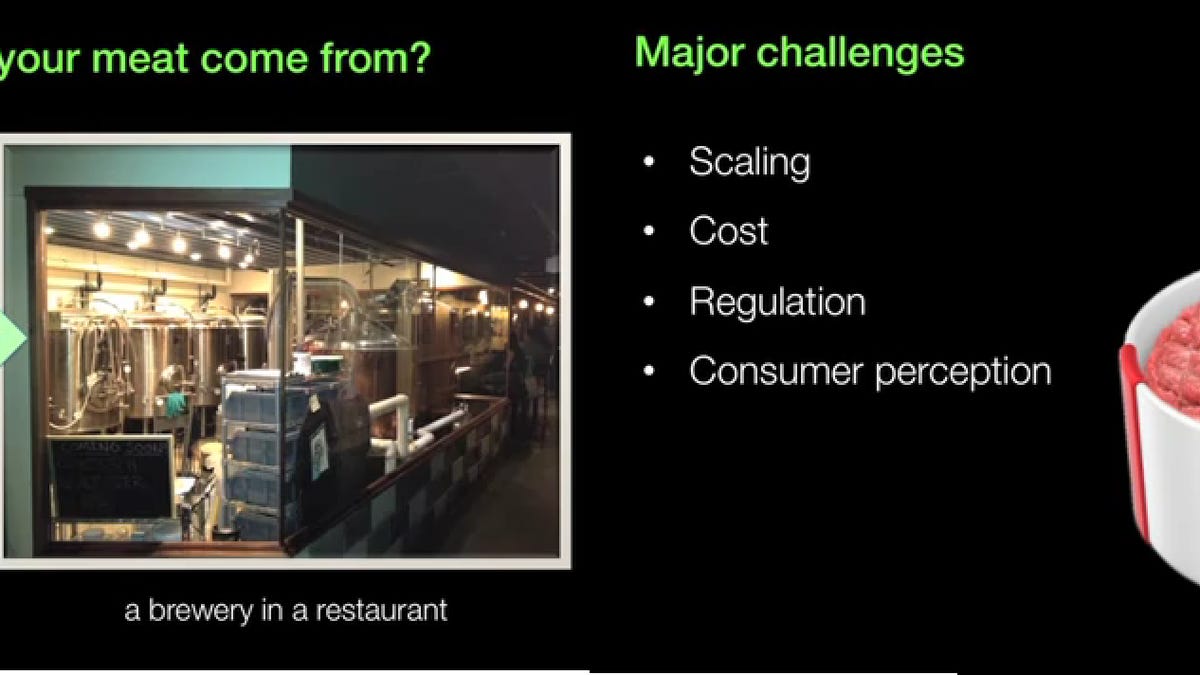3D printed meat: It's what's for dinner
Peter Thiel's philanthropic foundation gives up to $350,000 to a company named Modern Meadow, which plans to use 3D bioprinting to create an "edible prototype" that's a meat replacement.

3D printing has been used to create running shoes, medical implants, and, to the delight of firearm enthusiasts, a .22 caliber handgun. So why not a 3D-printed steak for the grill?
Billionaire investor Peter Thiel's philanthropic foundation plans to announce today a six-figure grant for bioprinted meat, part of an ambitious plan to bring to the world's dinner tables a set of technologies originally developed for creating medical-grade tissues.
The recipient of the Thiel Foundation's grant, a Columbia, Mo.-based startup named Modern Meadow, is pitching bioprinted meat as a more environmentally-friendly way to satisfy a natural human craving for animal protein. Co-founder Andras Forgacs has sharply criticized the overall cost of traditional livestock practices, saying "if you look at the resource intensity of everything that goes into a hamburger, it is an environmental train wreck."
"Modern Meadow is combining regenerative medicine with 3D printing to imagine an economic and compassionate solution to a global problem," said Lindy Fishburne, executive director of Breakout Labs, a project of the Thiel Foundation. "We hope our support will help propel them through the early stage of their development, so they can turn their inspired vision into reality." (See CNET's Q&A with Thiel from last year.)
Breakout Labs is also giving grants to Bell Biosystems and Entopsis, both medical startups. A Breakout Labs representative declined to give exact figures, saying that each grant was for a sum between $250,000 and $350,000.
Even though 3D printing of meat is still in the early stages, not least because of its high cost, it's long been a staple of science fiction. In the fictional universe of Orion's Arm, for instance, there are prillets, animals that are "printed without any bones at all, often premarinated." In vitro meat, sometimes called shmeat, appeared in William Gibson's Neuromancer, and an original Star Trek episode featured synthetic meatloaf.
While Modern Meadow's Web site is currently offline, it prepared a summary of its work as part of a submission to the Department of Agriculture's small business grant program. It says its short-term goal is to create a sliver of synthetic meat that's less than one inch long:
So far, bio-printing has been applied to build three-dimensional tissues and organ structures of specific architecture and functionality for purposes of regenerative medicine. Here we propose to adapt this technology to building meat products for consumption. The technology has several advantages in comparison to earlier attempts to engineer meat in vitro. The bio-ink particles can be reproducibly prepared with mixtures of cells of different type... Printing ensures consistent shape, while post-printing structure formation and maturation in the bioreactor facilitates conditioning... We anticipate that this Phase I application will result in a macroscopic size (~2 cm x 1 cm x 0.5 mm) edible prototype and will demonstrate that bio-printing-based in vitro meat production is feasible, economically viable and environmentally practical. Successful in vitro meat engineering addresses a number of societal needs, thus the commercialization of the method has high market potential.

